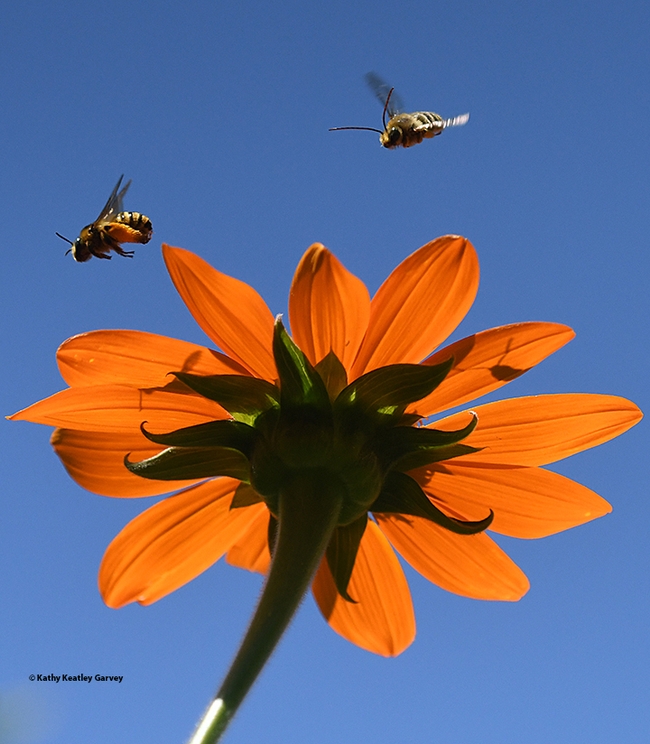If you've ever tried to photograph male long-horned bees, Melissodes agilis, you know how fast they can fly and how quick they can dart.
They fly even faster when they're chasing the females of their species.
It was the last day of June. I was watching the female long-horned bees foraging on the Mexican sunflowers, Tithonia rotundifola, in our garden, and the territorial males targeting all "unwelcomed" visitors (honey bees, carpenter bees, and syrphid flies) and chasing prospective mates.
The University of California-affiliated authors of the book, California Bees and Blooms: A Buide For Gardeners and Naturalists, say it well: They "fly wildly around gardens looking for mates and stop occasionally to take a sip of nectar from flowers."
Yes, they do fly wildly--and you need a fast shutter speed to photograph them.
I set the shutter-speed of my camera, a Nikon D500 with a 200mm macro lens, at 1/8000 of a second. Other settings: f-stop 5, and ISO, 800.
Here they come! There they go.
Where DID they go?
At 1/8000 of a second, you can stop the action. You can stop time. You cannot, however, stop a determined suitor from chasing a mate. They don't slow down.
Attached Images:
